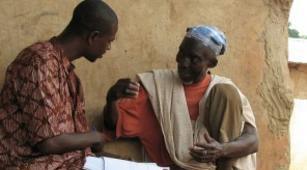 loading
loading
FindingsMeasuring microfinance on a micro levelVillage savings and loan associations helped improve business for people in rural Africa.  Innovations for Poverty ActionVillage savings and loan association members meeting in Africa. View full imageAmong the many things poor people lack, one is access to banks. “Most financial institutions aren’t set up to serve the very poor in remote areas,” says Dean Karlan, the founder of Innovations for Poverty Action and, until July, a Yale economics professor. (He is now at Northwestern.) This is problematic, because banks can mitigate poverty. “Even the very poor can and do save,” says Karlan, “when given the right opportunities.” Karlan has spent his career using experiments to ferret out which practices alleviate poverty. Recently, he and a team of researchers at Yale and Ghent Universities turned their attention to village savings and loan associations (VSLAs). VSLAs have been tested by, among others, the nonprofit CARE: in 1991, residents of rural Niger were encouraged to contribute savings to a shared pot of money. Unlike with microcredit, no outside capital was brought in. Funds were disbursed after a set period, or used for emergency loans as needed. It was a bank where banks weren’t. To test the efficacy of VSLAs, Karlan and his team, along with CARE and other nongovernmental organizations, randomly assigned villages in Ghana, Malawi, and Uganda to receive training in the formation and upkeep of VSLAs. A separate group of villages received no training. Two to three years later, the researchers returned to compare outcomes. The results, published in the Proceedings of the National Academy of Sciences, were encouraging, though modest. Broadly, households in VSLA villages had higher savings, took out more loans, and had more profitable businesses. And because the VSLAs comprised mostly women, they led to a marked increase in women’s empowerment. Ultimately, though, the program did not boost household income or food security. “But remember,” says Karlan, “we didn’t really give them anything—only some advice on how to start savings groups.” For policymakers, then, this is an inexpensive way to help people start saving—small bang, small bucks, as Karlan put it. He hopes for long-term follow-up. dylan walsh ’11mem
The comment period has expired.
|
|